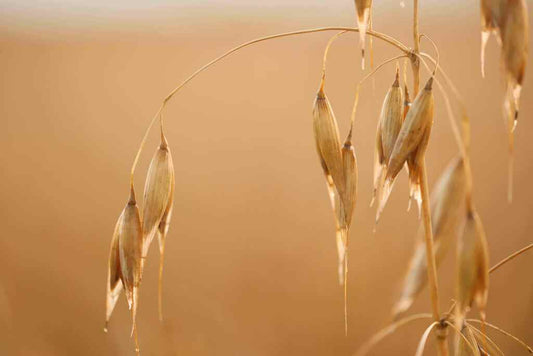 Here is an overview of a year’s worth of chores.
Here is an overview of a year’s worth of chores.
February
Get more detailed with your plan. Be ready for planting time.- Order seeds and plants
- Clean and sharpen your tool - repair or replace as necessary
- Prune fruit trees before the buds swell
- Propagate houseplants as the days lengthen, and fertilize at half strength
March
March calls for more maintenance. Don't forget to enjoy the first spring flowering bulbs!- Finish pruning fruit trees early in the month
- Remove mulch from and prune your roses
- Make a compost pile
- Start cleaning the yard if the snow is gone
- Rake the lawn to remove the thatch layer
- Clean up last year’s debris
- Add compost to beds

April
April showers bring May flowers, whereas your hard work this month will bring a bountiful harvest for summer and fall.- Deadhead the flowers of early blooming shrubs and bulbs
- Ensure your irrigation system is working - replace or repair what needs it, and check it again
- Fertilize the lawn with slow release organic fertilizer
- Plant cool weather vegetables and herbs – lettuce, kale, chard, arugula, beets, carrots, spinach, green onions.
May
May is the big planting month!- Get your warm weather vegetables, flowers and herbs in the ground
- Be aware of late frosts, and cover plants as needed
- Plant gladiola and dahlia bulbs
- Deadhead and prune shrubs that flower
- Check for pests (aphids, squash bugs, cabbage loopers), and use natural controls to keep them in check
- Start your hardscaping projects (walkways, fences, patios)

June
You can finally start harvesting some greens. Remember to relax a bit this month, and enjoy your hard work so far.- Finish up planting, add a thick layer of mulch, and start weeding to allow new plants to thrive
- Water daily to get seedlings established
- Watch for tent caterpillars and powdery mildew, and treat organically
- Harvest greens, peas and perennial herbs
- Keep deadheading shrubs as they flower
July
Your hard work is starting to pay off this month. Keep going!- Keep weeding, watering, and watching for pests and diseases
- Water your containers twice a day, and deep-water trees and shrubs every two weeks
- Mid-month, stop deadheading flowering shrubs
- Harvest garlic early in the month, and the beginnings of the beans, cucumbers, peppers, and tomatoes later in the month
- Make arrangements for someone to water if you go on vacation
- Divide irises
- Plant a fall harvest with succession planting
August
Ah, the month when all your hard work pays off! This is the biggest harvest month – vegetables, fruits, flowers and herbs- Experiment with new recipes
- Get prepared to put up your edibles for winter by canning, freezing and drying them
- The shortening days slow plant growth, so back off watering and fertilizing
- Order spring flowering bulbs
September
Frost might come knocking at your door this month.- Be prepared to cover tender plants at night
- As plants die back, clean up those areas
- Replace with winter cover crops, or cover beds with a layer of compost
- Bring in houseplants, and empty containers as plants die back
- Divide peonies
- Start saving seed of flowers and vegetables

October
It's a great time to take advantage of year-end sales and prepare for the cold months to come.- Plant trees, shrubs and perennials
- Plant garlic and spring flowering bulbs
- Seed bare spots in the lawn
- Rake leaves - go over them with the mower to use as mulch, or add them to the compost
- Dig up herbs to pot up and bring inside for winter
- Dig up gladiola and dahlia bulbs to store for winter
- Leave some seed heads on flowers as winter bird food
November
November is about preparing your soil for the year to come.- Finish cleaning up flower and vegetable beds
- Get a soil test to prepare for amendments in spring
- Hang bird feeders
- Mulch strawberries with 5” of straw
- Remove diseased wood from roses
- Mulch or hill up soil around the base of them to a depth of 10-12”
- Clean and oil your tools before putting them away - trade them for your snow shovels and snow blower!
December
Seed catalogs start rolling in now to let you start dreaming about next year! In this quiet gardening month, review the growing season just past.- Make notes about what worked well and what didn’t
- Add those thoughts to next year’s plan, which you should be working on right now!
- Buy gardening gifts for friends, and ask for the same gifts yourself.
- Force paperwhites for midwinter beauty and fragrance

January
This is a wind-down month after the holidays. It's a good time to settle in with seed catalogs and dream about summer.- Start planning gardens and other yard projects
- Keep your bird feeders full
- Compost or chip your Christmas tree
- Learn to watch the weather
Record Keeping is Vital to Success
Get organized for any time of year. Make your own calendar to plan tasks, or check out these apps. Keep a detailed journal from year to year, recording plant vareties, planting schedules, bed maps, weather patterns, and harvest times and amounts. Trust me, it’s hard to remember all those things the following year! Write them down, add drawings and pictures, and refer to each year often. Happy gardening!Would you like to be the first to hear about our new products and more? Sign up for our Nature’s Path Newsletter.








